Writing for Young Minds
Self-Publishing Guide for Writing Children's Books
Learn how to self-publish your children's book with our comprehensive guide on writing, editing, formatting, and marketing.
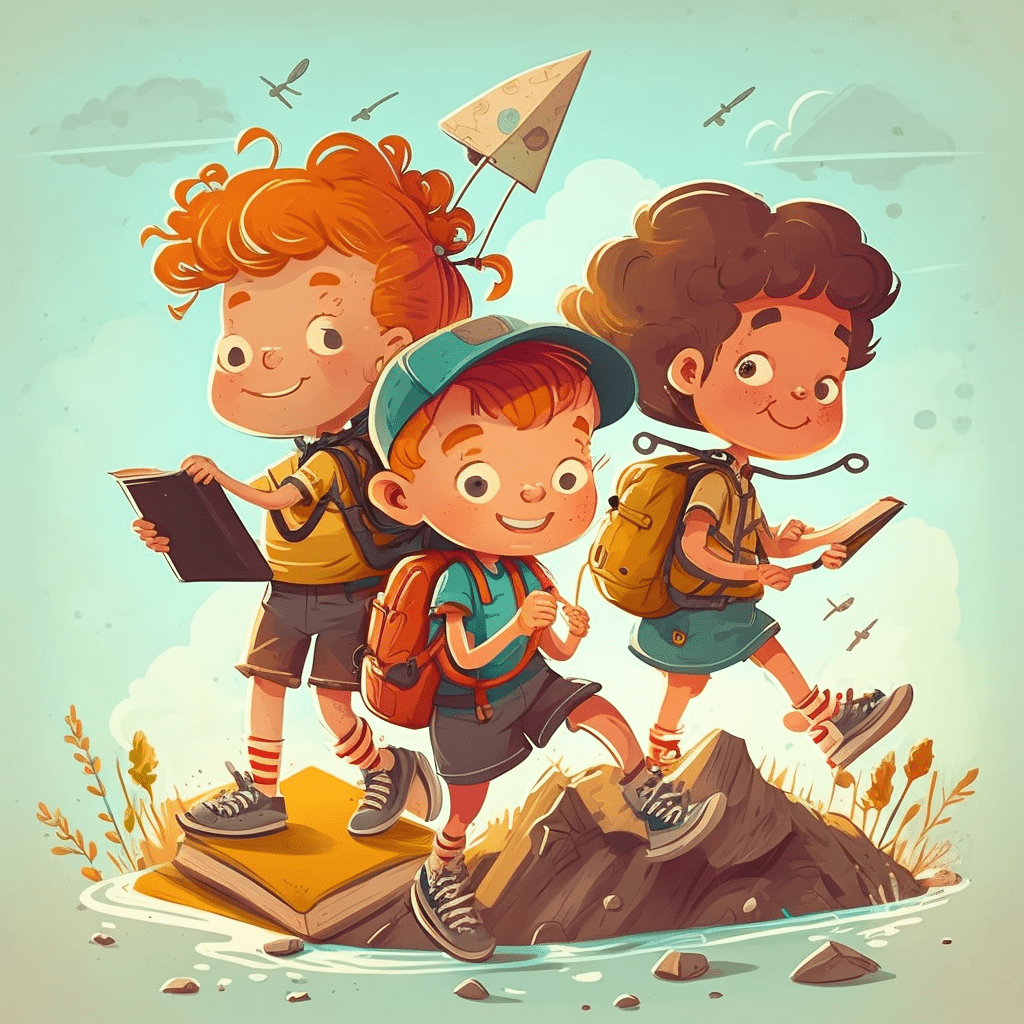
Welcome to our blog for self-published authors interested in writing for children. Whether you have ideas that you want to transform into books or believe in the power of stories to educate and inspire young readers, this blog is for you. As a self-published author, we understand that you have a deep commitment to creating meaningful stories that can make a difference in the world. Children's books have the ability to shape young minds, promote diversity and inclusion, and teach valuable lessons that can improve the world.
Here, we will explore various topics related to writing for children, including the writing process, character development, plot structure, and more. We will also discuss the importance of illustrations in children's books and how to work with illustrators to bring your story to life.
But our focus is not only on crafting great stories. We are also dedicated to helping you succeed as an author, which includes tips on how to sell and distribute your books to different markets and channels.
Whether you're just getting started or are a seasoned writer, our goal is to provide valuable insights and practical tips to help you create and publish books that can inspire, educate, and improve the world.
So, join us on this journey as we explore the wonderful world of writing and publishing children's books. Let's work together to transform your ideas into stories that can positively impact and shape the next generation of readers.
i. How to Write Engaging Stories that Teach Important Lessons to Young Readers
There is no better feeling as a writer than knowing that your work has impacted someone positively. One way to achieve this is by writing stories that teach important lessons to young readers. Children are at a stage where they are developing their worldviews, and stories can be a powerful tool in shaping that perspective. However, it takes skill to write stories that engage young readers while also conveying an important message. In this article, we will explore how to write engaging stories that teach important lessons to young readers.
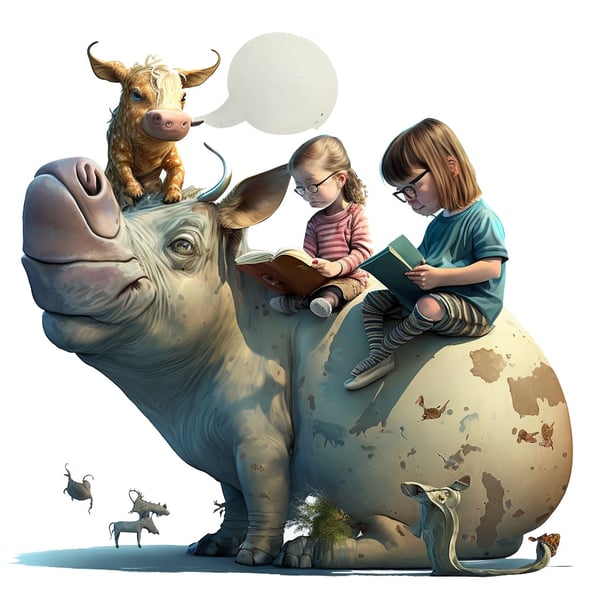
Understanding Your Audience
The first step in writing a story for young readers is to understand your audience. Children have different interests, reading levels, and attention spans depending on their age. As a writer, you need to consider these factors when crafting your story. For instance, a story for a six-year-old may be simpler, shorter, and more visual than a twelve-year-old. Moreover, you need to consider the cultural, social, and economic backgrounds of your readers. Writing stories that are relatable to the readers will make the lessons more impactful.
Choosing a Theme
The theme of your story is the central idea that you want to convey to the readers. It could be a moral lesson, a social issue, or a personal struggle. When choosing a theme, it is essential to consider the age and experience of your readers. For instance, young readers may relate better to themes of friendship, self-esteem, and perseverance, while older readers may appreciate themes of diversity, environmentalism, and justice. Once you have chosen your theme, make sure it is clear and consistent throughout the story.
Creating Engaging Characters
Characters are the heart of any story. They are the ones who bring the story to life and allow the readers to empathize with the message. When creating characters for young readers, you need to make them relatable, likeable, and engaging. Give them personalities, backstories, and conflicts that the readers can identify with. Moreover, make sure the characters reflect the diversity of the readership. Children from different backgrounds should see themselves in the characters and learn from their experiences.
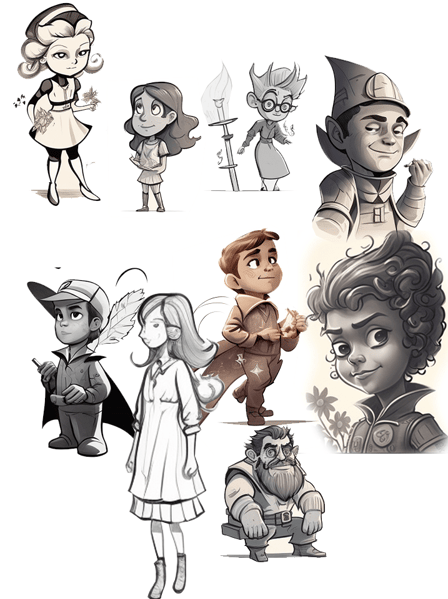
Plotting the Story
The plot is the sequence of events that make up the story. A good plot should be engaging, and coherent, and have a clear beginning, middle, and end. When writing a story for young readers, it is essential to keep the plot simple and easy to follow. Use visual aids, dialogue, and action to maintain the reader's interest. Moreover, make sure the plot serves the theme of the story. The events in the story should lead to the lesson you want to convey.
Using Language Effectively
Language is a powerful tool in writing stories. It can evoke emotions, paint pictures, and convey meaning. When writing for young readers, you need to use language that is appropriate for their age and reading level. Use simple words and sentences, and avoid complex concepts and jargon. However, this does not mean you should dumb down the language. Use descriptive language, figurative language, and dialogue to engage the reader's imagination. Moreover, use repetition and rhythm to make the story more memorable.
Adding Visual Elements
Visual elements, such as illustrations and graphics, can enhance the reading experience for young readers. They can help convey the mood, setting, and characters of the story. Moreover, they can make the story more accessible to readers with learning disabilities or visual impairments. When adding visual elements, make sure they are consistent with the tone and theme of the story. Moreover, make sure they are of high quality and easy to understand.
Conclusion
In conclusion, writing engaging stories that teach important lessons to young readers is an art that requires skill, creativity, and empathy. By capturing the attention of young readers through relatable characters, engaging plots, and effective language, writers can make a positive impact on the lives of young readers. As a writer, it is essential to understand the power of stories in shaping young minds and take responsibility for the lessons we impart.
Remember, the stories we tell can inspire kindness, empathy, and understanding, or perpetuate harmful stereotypes and beliefs. By writing stories that teach important lessons, we can help young readers navigate the complexities of the world with greater awareness, resilience, and compassion.
So, the next time you write a story for young readers, think beyond entertainment and aim to create something meaningful and impactful. Who knows, your story might just be the one that inspires the next generation of leaders, thinkers, and changemakers.
FAQs
-
How do I know if my story is appropriate for young readers?
When writing for young readers, it is essential to consider the age, reading level, and interests of your target audience. You can also consult with teachers, librarians, or parents to ensure your story is appropriate.
-
How do I create characters that are relatable to young readers?
To create relatable characters, give them personalities, backstories, and conflicts that the readers can identify with. Moreover, make sure the characters reflect the diversity of the readership.
-
Can I use humor in stories that teach important lessons?
Yes, humor can be an effective tool in engaging young readers and conveying important messages. However, make sure the humor is appropriate for the age and culture of your readers.
-
How can I make my story more impactful?
To make your story more impactful, ensure the theme is clear and consistent throughout the story. Moreover, make sure the characters, plot, and language serve the theme of the story.
-
Why are stories important for young readers?
Stories can help young readers develop empathy, critical thinking, and creativity. They can also introduce young readers to new ideas, perspectives, and cultures.
ii. The Key Elements of Successful Children's Book Illustrations
As a children's book author, you know how crucial illustrations are to the success of your book. The right illustrations can make a story come alive, engage young readers, and create a lifelong love of reading. But what makes an illustration successful? What key elements should you consider when working with an illustrator or creating your own illustrations? We will explore the key elements of successful children's book illustrations that can help you create a masterpiece that captivates young readers.
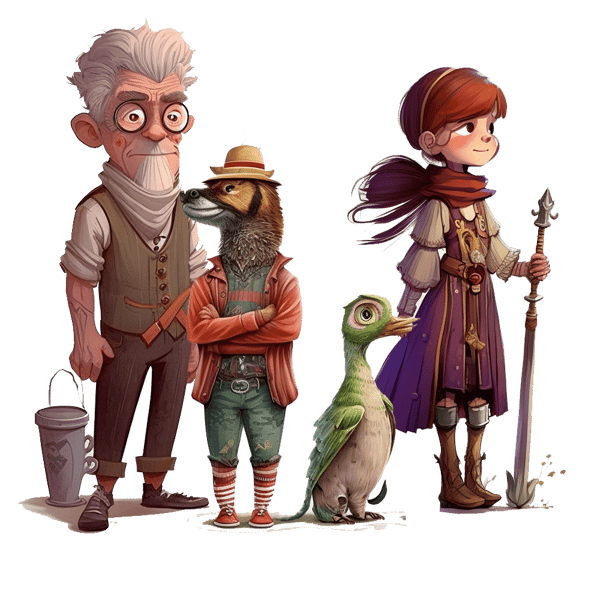
The Role of Illustrations in Children's Books
Before diving into the key elements of successful children's book illustrations, it's essential to understand the crucial role that illustrations play in engaging and inspiring young readers. Children's books are not just about the story, but they are also about the visual experience that the reader has when exploring the book. Illustrations can help young readers understand the story's plot, setting, and characters, making it easier for them to connect with the book emotionally. Moreover, illustrations can create a sense of wonder and imagination, allowing children to visualize a world beyond their own. Thus, the right illustrations are essential to create a successful children's book that captures the reader's heart.
The Key Elements of Successful Children's Book Illustrations
-
Strong Conceptualization and Visual Storytelling: The first key element of successful children's book illustrations is strong conceptualization and visual storytelling. The illustrations should be able to tell a story on their own, without relying on the text. The illustrator should be able to create characters that are unique, relatable, and visually appealing. The illustrations should be able to convey the mood and tone of the story, and the setting should be detailed enough to transport the reader to the world of the book.
-
Appropriate Style and Technique: The second key element of successful children's book illustrations is the appropriate style and technique. The illustrator should use a style and technique that is appropriate for the story's genre, age group, and theme. For example, a whimsical and colorful style might work best for a children's book about a magical world, while a more realistic style might be suitable for a book about nature or history.
-
Effective Composition and Layout: The third key element of successful children's book illustrations is effective composition and layout. The illustrations should be composed in a way that is visually appealing and easy to understand. The illustrator should consider the placement of characters and objects in the scene, the use of negative space, and the overall balance of the illustration.
-
Color and Contrast: The fourth key element of successful children's book illustrations is color and contrast. The illustrator should use color to convey mood, emotion, and setting. The colors used should be appropriate for the story and the age group of the readers. The illustrator should also use contrast effectively to create depth and focus the reader's attention.
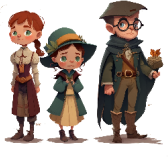
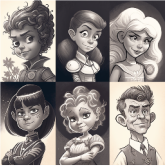
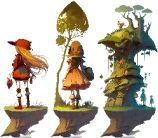
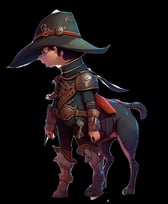
-
Detail and Texture: The fifth key element of successful children's book illustrations is detail and texture. The illustrator should pay attention to the details of the illustrations, such as the texture of the objects, the facial expressions of the characters, and the intricate patterns in the setting. The details should be appropriate for the story and add depth and richness to the illustrations.
-
Consistency and Coherence: The sixth key element of successful children's book illustrations is consistency and coherence. The illustrations should be consistent with the story's tone and theme, and the illustrator should use a consistent style and technique throughout the book. The illustrations should also be coherent and easy to understand, even if the reader is looking at them out of order.
-
Innovative and Creative: The seventh key element of successful children's book illustrations is innovation and creativity. The illustrator should bring their own unique style and creativity to the illustrations, creating something fresh and new that captures the reader's attention. The illustrations should be able to spark the reader's imagination, inspiring them to explore new worlds and ideas.
The Power of Successful Children's Book Illustrations
When all of these key elements are combined, successful children's book illustrations can have a powerful impact on young readers. They can capture the reader's attention and imagination, making the story more memorable and engaging. Moreover, they can create a lifelong love of reading and inspire young readers to explore new worlds and ideas. Successful children's book illustrations have the power to shape young minds and instill a love of learning and creativity that can last a lifetime.
Conclusion
Creating successful children's book illustrations requires a combination of strong conceptualization, appropriate style and technique, effective composition and layout, color and contrast, detail and texture, consistency and coherence, and innovation and creativity. By focusing on these key elements, you can create illustrations that captivate young readers, inspire their imagination, and instill a lifelong love of reading.
FAQs
-
Why are illustrations important in children's books?
Illustrations are essential in children's books because they can help young readers understand the story, create a sense of wonder and imagination, and engage them emotionally.
-
What are the key elements of successful children's book illustrations?
The key elements of successful children's book illustrations are strong conceptualization and visual storytelling, appropriate style and technique, effective composition and layout, color and contrast, detail and texture, consistency and coherence, and innovation and creativity.
-
How can I find the right illustrator for my children's book?
You can find the right illustrator for your children's book by researching their portfolio, checking their references, and discussing your vision and expectations for the book.
-
Can I create my own illustrations for my children's book?
Yes, you can create your own illustrations for your children's book. However, it's essential to consider the key elements of successful illustrations and seek feedback from others to ensure they meet the standards of successful children's book illustrations.
-
What is the power of successful children's book illustrations?
Successful children's book illustrations have the power to capture the reader's attention and imagination, making the story more memorable and engaging. They can also create a lifelong love of reading and inspire young readers to explore new worlds and ideas.
iii. The Power of Characters in Children's Books: Engaging Young Readers
Children's books have the power to transport readers to magical worlds, ignite their imaginations, and inspire a lifelong love of reading. And one of the most important elements of a successful children's book is its characters. Well-crafted characters can capture a child's imagination, help them relate to the story, and make a lasting impression. In this article, we'll explore the key elements of successful children's book characters and why they are essential for engaging young readers.
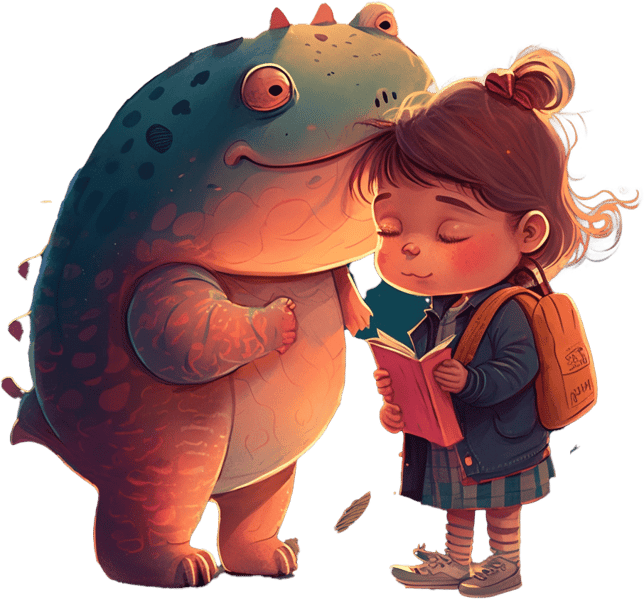
Why Characters Matter in Children's Books?
Children's books are often a child's first introduction to literature. They provide a unique opportunity to spark a child's imagination and instill a love of reading that can last a lifetime. Characters are a vital component of any successful children's book because they help children connect with the story on an emotional level. They can help children relate to the story, feel empathy for the characters, and even learn important life lessons.
What Makes a Great Children's Book Character?
Great children's book characters have a few key qualities that set them apart from the rest. Firstly, they are relatable. Children need to be able to see themselves in the character, whether it's through shared experiences, emotions, or desires. Characters that are too one-dimensional or don't have any flaws can be difficult for children to connect with. Characters should have unique personalities, quirks, and traits that make them stand out.
Secondly, children's book characters should be memorable. A child may encounter hundreds of characters over the course of their childhood, but the most memorable ones are the ones that stick with them. Whether it's a unique physical characteristic, a catchy catchphrase, or a memorable personality trait, a great children's book character will leave a lasting impression.
Finally, great children's book characters should be age-appropriate. Young readers need characters that are relatable and appropriate for their age group. Characters that are too complex, mature, or sophisticated may be difficult for children to understand, and may even be inappropriate.
Tips for Creating Engaging Children's Book Characters

If you're an aspiring children's book author, creating engaging characters is essential for capturing young readers' imaginations. Here are a few tips for creating characters that will make your book a hit:
-
Start with a clear idea of your target audience
Before you start developing your characters, it's important to have a clear understanding of your target audience. Are you writing for preschoolers, early readers, or middle-grade readers? Knowing your audience will help you create characters that are age- appropriate and engaging.
-
Create characters with unique personalities and traits
Great children's book characters have unique personalities, quirks, and traits that make them stand out. Spend time developing your characters and giving them distinct personalities that will resonate with young readers.
-
Make your characters relatable
Children need to be able to see themselves in your characters. Create characters that are relatable by giving them experiences, emotions, and desires that children can understand and identify with.
-
Use descriptive language to bring your characters to life
To make your characters come to life on the page, use descriptive language to paint a vivid picture of them. Describe their appearance, personality, and actions in a way that will help young readers visualize them.
-
Give your characters room to grow
Just like real people, characters should have room to grow and change over the course of the story. Give your characters challenges to overcome, lessons to learn, and opportunities for growth.
-
Embrace diversity in your characters
Creating diverse characters in children's books is of utmost importance in fostering inclusivity and promoting understanding among young readers. Representation matters, and by introducing characters from various ethnic backgrounds, economic situations, and ability levels, authors have the opportunity to reflect the rich tapestry of our society. Diverse characters allow children to see themselves and others in the stories they read, helping to cultivate empathy, respect, and acceptance. Moreover, diverse characters challenge stereotypes and break down barriers, encouraging children to embrace differences and celebrate the unique qualities that make each individual special. By embracing diversity in children's literature, we can shape a more inclusive and harmonious future for the next generation.
Conclusion
In conclusion, characters are an essential element of successful children's books. Another way to create characters that can appeal to children is to base them on real-life experiences. Many children's book authors have found success by drawing inspiration from their own lives, as well as the lives of their children or grandchildren.
For example, the beloved character of Paddington Bear was inspired by the author's own experiences of encountering a bear in Paddington Station, London. The author then went on to create a charming, curious, and mischievous character that has become a classic in children's literature.
Similarly, the character of Max in "Where the Wild Things Are" was based on the author's own childhood experiences of acting out and being sent to bed without supper. By tapping into his own emotions and memories, the author was able to create a relatable and engaging character that has captured the hearts of generations of children.
In addition to drawing on personal experiences, authors can also use cultural references and myths to create characters that can resonate with children from different backgrounds. By incorporating elements from different cultures, authors can create diverse and inclusive characters that can help children understand and appreciate different ways of life.
For example, the character of Anansi the Spider, a popular figure in African folklore, has been adapted into many children's books that teach valuable lessons about trickery and problem-solving. Similarly, the character of Mulan, a legendary figure from Chinese folklore, has been adapted into many children's books and movies that celebrate bravery, determination, and the power of female empowerment.
Overall, creating engaging characters in children's books requires a combination of creativity, relatability, and cultural sensitivity. By tapping into their own experiences, as well as the myths and legends of different cultures, authors can create characters that can inspire and educate children of all ages and backgrounds.
FAQs
-
Do I need to have a lot of personal experiences to create engaging characters?
Not necessarily. While drawing on personal experiences can be a great way to create relatable characters, authors can also create engaging characters through research and imagination. It's all about finding a balance between personal experiences and creativity.
-
How can I make sure my characters are culturally sensitive?
Research is key. Before incorporating elements from different cultures, make sure to do your research and consult with cultural experts to ensure accuracy and sensitivity.
-
Should I prioritize relatability or creativity when creating characters?
Both are important! Engaging characters should be relatable enough for children to connect with, but also creative and unique enough to capture their imagination.
-
Can I create characters based on real-life people?
Yes, but make sure to obtain their permission and consider their privacy. It's also important to change certain details and characteristics to avoid any potential legal issues.
-
How can I make sure my characters are age-appropriate?
Consider the age range of your target audience and make sure the themes and content of your characters are appropriate. You can also consult with children or parents to get feedback on your characters.
By considering these questions and putting in the effort to create unique and engaging characters, authors can create children's books that inspire and educate children for generations to come.
Finding and Working with Reliable Book Editors and Illustrators
As an author, creating a book is a fulfilling and rewarding experience. However, it takes more than just writing a manuscript to get a book published. Finding reliable book editors and illustrators to help refine and bring your story to life is crucial. In this article, we will discuss the steps to finding and working with reliable book editors and illustrators.
iv. Steps to Finding Reliable Book Editors

-
Do Your Research - Start by researching different book editors to find one that matches your genre, writing style, and budget. Check out their websites, read reviews, and ask for recommendations from other authors.
-
Review Their Portfolio - Look at the editor's portfolio to see the books they have edited in the past. This will give you an idea of their editing style and whether they have experience editing books similar to yours.
-
Check for Availability - Make sure the editor is available to work on your book within your timeline.
-
Request a Sample Edit - Before hiring an editor, request a sample edit of a chapter or two from your manuscript. This will allow you to see their editing style and ensure that you are a good fit.
-
Discuss Pricing and Services - Once you have found an editor you like, discuss their pricing and services. Make sure you have a clear understanding of what is included in the editing process, such as line editing, copyediting, and proofreading.
Getting your first book published by yourself can be a daunting task. Let us guide you through all the details of a successful launch. With EBL you get access to the same level of professionals than all the major TradPub guys.
Steps to Finding Reliable Book Illustrators
-
Determine Your Budget - Before beginning your search for an illustrator, determine your budget for illustrations.
-
Research - Start by researching different book illustrators to find one that matches your genre and style.
-
Review Their Portfolio - Look at the illustrator's portfolio to see the books they have illustrated in the past. This will give you an idea of their style and whether they have experience illustrating books similar to yours.
-
Check for Availability - Make sure the illustrator is available to work on your book within your timeline.
-
Discuss Pricing and Services - Once you have found an illustrator you like, discuss their pricing and services. Make sure you have a clear understanding of what is included in the illustration process, such as the number of illustrations and revisions.
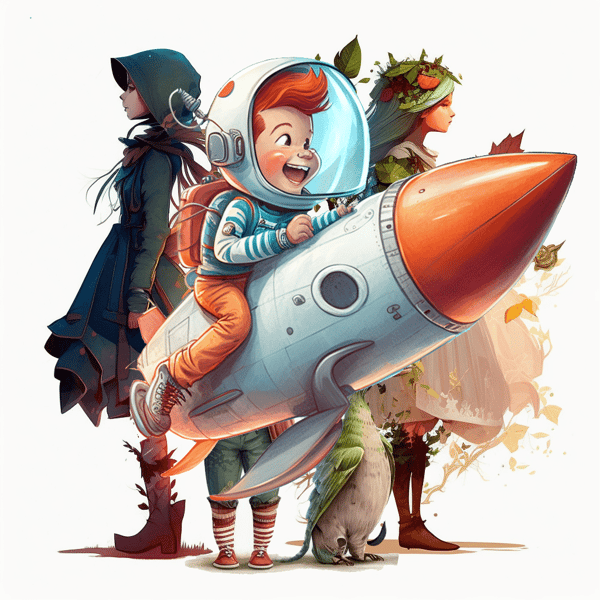
Working with Editors and Illustrators
-
Establish Clear Communication - Establish clear communication with your editor and illustrator from the beginning. Make sure you discuss your vision for the book and what you hope to achieve with their help.
-
Provide Feedback - Provide constructive feedback to your editor and illustrator throughout the editing and illustration process. This will ensure that the final product meets your expectations.
-
Trust Their Expertise - Trust the expertise of your editor and illustrator. They are professionals and have experience in their respective fields.
-
Meet Deadlines - Make sure you meet deadlines set by your editor and illustrator. This will ensure a smooth and timely publishing process.
-
Give Credit - Make sure you give credit to your editor and illustrator in your book. This will not only show appreciation for their hard work but also provide recognition for their contributions to the book.
In conclusion, finding and working with reliable book editors and illustrators is crucial for creating a successful book. By following the steps outlined in this article, you can ensure that you find the right professionals to help bring your story to life. Remember to establish clear communication, provide feedback, trust their expertise, meet deadlines, and give credit where it is due.
FAQs
-
What should I look for in an editor or illustrator?
When searching for an editor or illustrator, consider their experience, portfolio, and references. It’s also important to find someone whose style and approach align with your vision and goals for the project.
-
How much should I expect to pay for editing or illustration services?
The cost of editing and illustration services can vary widely depending on the scope and complexity of the project, as well as the experience and expertise of the professional. It’s important to discuss fees and payment expectations upfront and ensure that they are included in any contracts or agreements.
-
How involved should I be in the editing and illustration process?
While it’s important to establish clear communication and expectations with your editor and illustrator, it’s also important to trust their expertise and experience. Be open to feedback and suggestions, but also be clear about your vision and goals for the project. Finding a balance between collaboration and creative freedom can lead to the best possible outcome.
-
What should I do if I’m not satisfied with the work of my editor or illustrator?
If you are not satisfied with the work of your editor or illustrator, it’s important to address your concerns directly and professionally. Discuss any issues or areas of dissatisfaction and see if they can be resolved. If not, it may be necessary to seek out a different professional who better aligns with your vision and needs.
V. Understanding Copyright and Trademark Laws for Children's Books
If you're a children's book author or illustrator, you likely know that protecting your work is important. One way to do this is by understanding copyright and trademark laws.
Here's what you need to know:
What is Copyright?
Copyright is a legal right that gives creators of original works exclusive control over how their work is used, reproduced, and distributed. This includes literary works, such as books, as well as illustrations and other visual art. Once you create something, you automatically own the copyright to it. However, it's a good idea to formally register your copyright with the U.S. Copyright Office to provide additional legal protection.

What is Trademark?
A trademark is a word, phrase, symbol, or design that identifies and distinguishes the source of a product or service from others. In the context of children's books, a trademark could be a character's name or image, a series title, or even a specific font or design element used on the book cover. Registering a trademark with the U.S. Patent and Trademark Office can help prevent others from using similar marks that could confuse consumers.
Why is it Important for Children's Book Authors and Illustrators to Understand Copyright and Trademark Laws?
As a children's book author or illustrator, protecting your intellectual property is crucial. Copyright and trademark laws help ensure that you have control over how your work is used and that others aren't profiting off of your creativity without your permission.

Additionally, understanding copyright and trademark laws can help you avoid unintentionally infringing on someone else's rights. For example, if you use a trademarked character in your book without permission, you could be sued for infringement.
FAQs
-
Do I need to register my copyright?
No, you do not need to formally register your copyright in order to own it. However, registering your copyright can provide additional legal protection and make it easier to enforce your rights if necessary.
-
Can I use trademarked characters in my children's book?
Generally, you should avoid using trademarked characters in your book without permission from the trademark owner. This includes well-known characters such as Mickey Mouse or Harry Potter. Using these characters without permission could result in a lawsuit for trademark infringement.
-
Can I trademark the title of my children's book?
It's possible to trademark a book title if it's used in connection with a series of books or if the title has acquired secondary meaning, meaning that consumers associate the title with a specific product or brand. However, it's not guaranteed that a book title will be approved for trademark registration.
VI. Creating Age-Appropriate Content for Children's Books
As a children's book author, it's important to consider the age group you are targeting when creating your content. Children have different levels of understanding and maturity depending on their age, and it's essential to make sure your content is appropriate for them. Here are some tips on creating age-appropriate content for children's books:
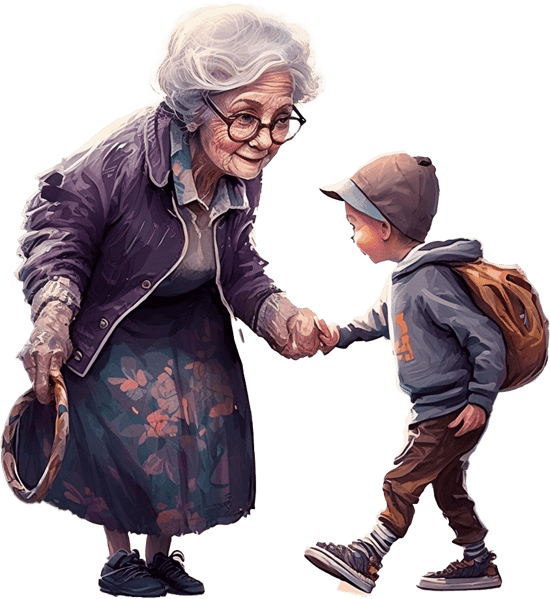
1. Know your audience
Before you start writing your children's book, it's important to know your target audience. Consider the age range of your readers and what kind of content they would enjoy. Younger children may prefer books with more illustrations and simple storylines, while older children may want more complex stories with more character development. Knowing your audience will help you tailor your content to their needs.
2. Use appropriate language
The language you use in your book should be appropriate for the age group you are targeting. Younger children may not understand complex vocabulary, while older children may find the simple language too babyish. Use age-appropriate language that your target audience can understand and relate to.
3. Consider sensitive topics
When writing for children, it's important to be sensitive to certain topics. Some topics, such as death and divorce, can be difficult for children to understand and process. If you do choose to include sensitive topics in your book, make sure to handle them in a sensitive and age-appropriate way.
4. Use illustrations effectively
Illustrations are a crucial part of children's books, especially for younger children. They help children understand the story and engage with the characters. Use illustrations effectively to enhance your story and make it more engaging for your readers.
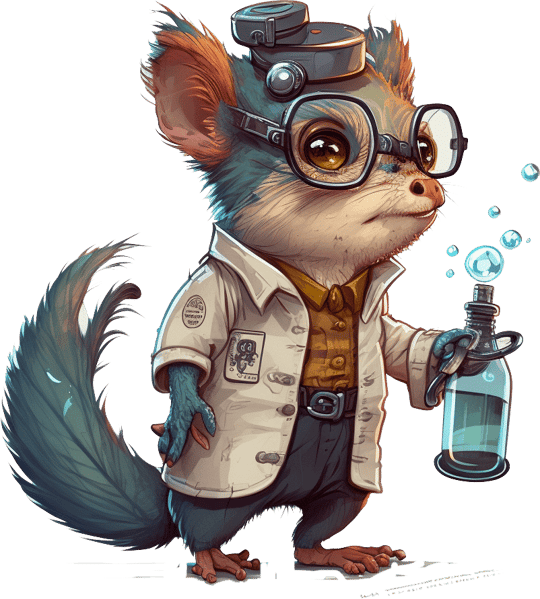
5. Avoid stereotypes
When creating characters for your children's book, it's important to avoid stereotypes. Stereotypes can be harmful and perpetuate harmful beliefs. Create diverse characters that children of all backgrounds can relate to and see themselves in.
6. Keep it simple
When creating your story, it's important to keep it simple and straightforward. Younger children may not have the attention span for long, complex stories, while older children may find simple stories too boring. Find the right balance and keep your story engaging and easy to follow.
7. Include a moral or lesson
Children's books often include a moral or lesson for children to learn. This can help children understand the world around them and develop empathy and understanding. Choose a moral or lesson that is age-appropriate and relevant to your story.
FAQs
-
What age range should I target for my children's book?
It's important to know your target audience and their age range. Consider the reading level and maturity level of your readers when creating your content.
-
How do I make sure my language is age-appropriate?
Use language that is easy to understand for your target audience. Avoid complex vocabulary for younger children, but also avoid language that is too simplistic for older children.
-
Can I include sensitive topics in my children's book?
Yes, but it's important to handle them in a sensitive and age-appropriate way. Consider the emotional maturity of your readers and make sure the topic is handled with care.
VII. How to design book covers that appeal to young readers and teachers
Designing a book cover can be challenging, especially when it comes to creating a design that will appeal to both young readers and teachers. It's important to keep in mind the target audience while also creating an eye-catching design that will stand out on the shelves. Here are some tips on how to design book covers that will appeal to young readers and teachers alike.
Understand your audience
Before starting the design process, it's important to understand your target audience. Who are you designing for? What are their interests and preferences? Children and teachers have different needs and interests when it comes to book covers. Children are often drawn to bright colors, bold graphics, and characters they can relate to, while teachers are looking for covers that convey the content and educational value of the book. By understanding your audience, you can create a design that will appeal to them.
Use age-appropriate imagery
When designing a book cover for children, it's important to use imagery that is age- appropriate. Younger children may prefer colorful illustrations of animals or cartoon characters, while older children may prefer more realistic imagery. It's also important to keep in mind the age range of the target audience when selecting imagery. For example, a book for young children may feature simple, bold illustrations, while a book for older children may feature more detailed illustrations or photographs.
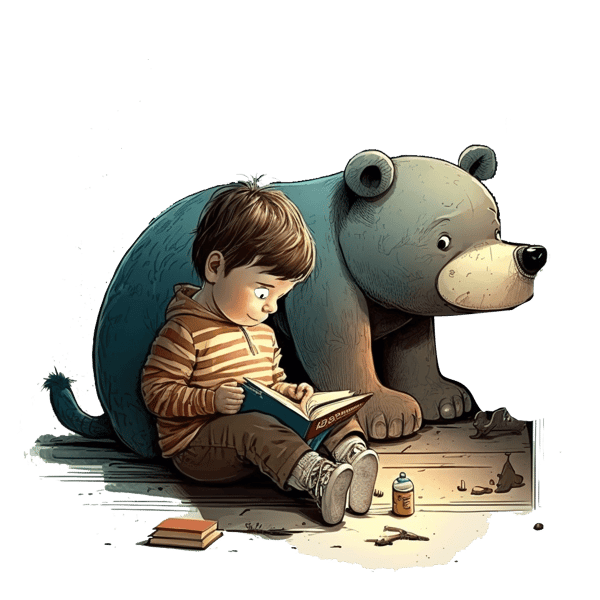
Incorporate educational value
Teachers are often looking for books that have educational value and can be used in the classroom. To appeal to teachers, it's important to incorporate educational value into the design of the book cover. This can be done through the use of educational imagery, such as maps or scientific illustrations, or by including educational information on the cover, such as a blurb or quote from a teacher or educator.
Consider the difference between school and home reading
It's important to consider the difference between school and home reading when designing a book cover. Books that are intended for school use may need to have a more formal or academic design, while books that are intended for home reading may be more playful and engaging. It's also important to consider the age range of the target audience, as younger children may be more drawn to fun and playful designs, while older children may prefer more mature designs.
Use eye-catching typography
Typography can play a big role in the design of a book cover. It's important to choose a font that is easy to read and will appeal to both children and adults. Bold and playful fonts can be used for younger children&'s books, while more sophisticated fonts can be used for older children's books. It's also important to consider the placement and size of the text on the cover, as this can impact the overall design.
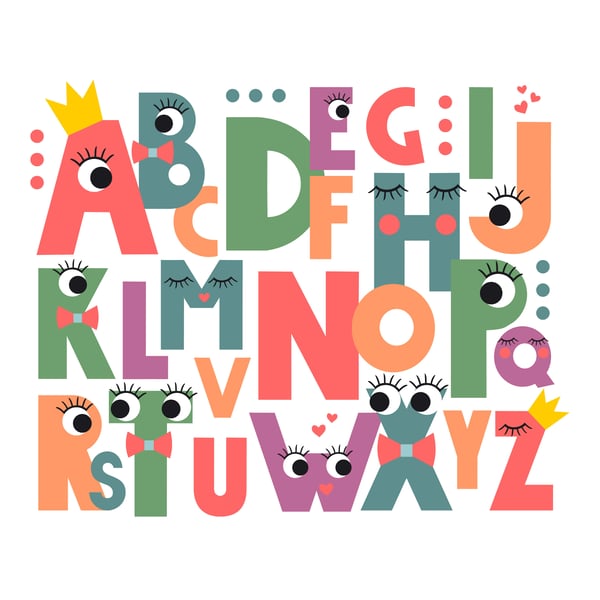
Conclusion
Designing a book cover that appeals to both young readers and teachers can be challenging, but by understanding your audience, using age-appropriate imagery, incorporating educational value, considering the difference between school and home reading, and using eye-catching typography, you can create a design that will stand out on the shelves.
FAQs
-
Can I use licensed characters on my book cover?
It depends on the specific licensing agreement. It's important to do your research and make sure you have the appropriate permissions before using licensed characters.
-
How important is the back cover design?
The back cover design can be just as important as the front cover design. It's often used to provide additional information about the book and can help convince readers to make a purchase.
-
Should I hire a professional designer for my book cover?
While it's possible to design your own book cover, it's often a good idea to hire a professional designer, especially if you don't have experience.
viii. Best Practices for Formatting and Layout in Children's Books
Formatting and layout are crucial components of children's books that can impact the reading experience. Good formatting and layout make it easier for children to read and understand the text, enhancing their overall enjoyment of the book. In this article, we will explore some best practices for formatting and layout in children's books.
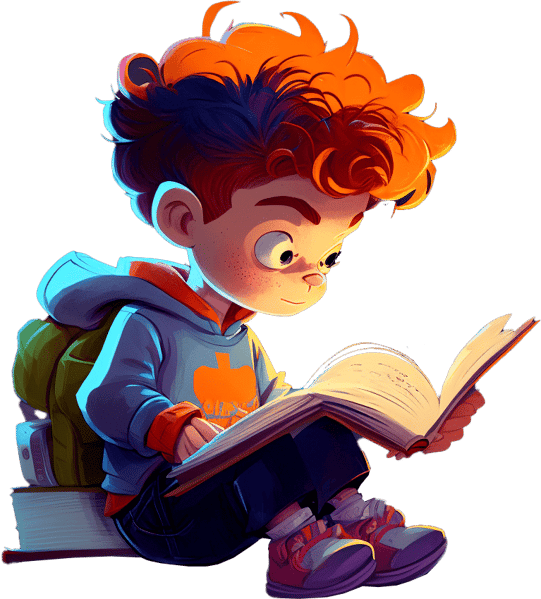
Choosing the Right Font and Size
Choosing the right font and size is important for ensuring that the text is legible and easy to read. When selecting a font, it is essential to consider its readability, particularly for children who may struggle with smaller or overly decorative fonts. A good rule of thumb is to use a simple, sans-serif font that is easy to read, such as Arial or Verdana. For font size, 12-14 points is a safe bet for most children's books, although this can vary depending on the age range.
Utilizing White Space
White space, or the empty space between text and images, is an essential component of formatting and layout. Using adequate white space can help break up the text and make the book feel less cluttered. It can also make the text easier to read and understand. While it may be tempting to cram as much text and images onto a page as possible, it is crucial to leave enough white space to avoid overwhelming young readers.
Incorporating Images and Illustrations
Images and illustrations are a vital component of children's books, helping to bring the story to life and capture the reader's imagination. When incorporating images, it is essential to choose high-quality, clear images that are relevant to the story. It is also crucial to consider the placement of the images, ensuring that they do not interfere with the text or overwhelm the page.
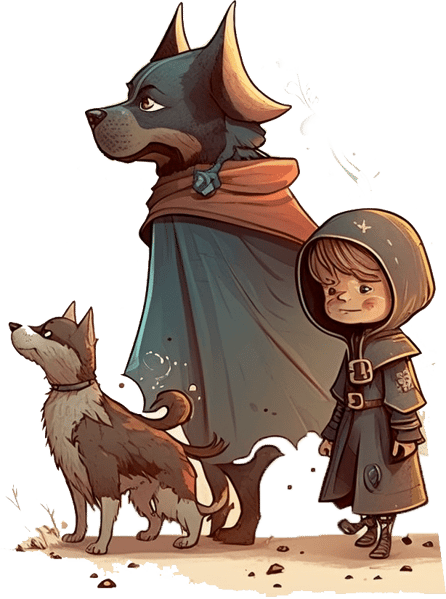
Considering Layout and Flow
The layout and flow of the book can significantly impact the reading experience. A well-designed layout can make it easier for young readers to follow the story, while a poorly designed layout can be confusing and detract from the overall enjoyment of the book. Consider using page breaks and chapter headings to break up the text and create a natural flow. Additionally, it is crucial to ensure that the layout is consistent throughout the book.
Creating a Design that Appeals to the Target Audience
Creating a design that appeals to the target audience is crucial for ensuring the book's success. When designing a children's book, it is essential to consider the age range, interests, and reading level of the target audience. For example, a book aimed at younger children may benefit from more illustrations and a simpler layout, while a book aimed at older children may benefit from a more complex layout and longer blocks of text.
Differences Between Print and Digital Formats
When designing a children's book, it is essential to consider the differences between print and digital formats. Print books may require different formatting and layout considerations than digital books, particularly when it comes to images and illustrations. Additionally, digital books may offer new opportunities for interactive elements, such as animations or audio.
How can I leverage digital marketing to promote my children's book?
You can create engaging content that appeals to the target audience, such as social media campaigns, email newsletters, and targeted online advertising. You can also consider partnering with online influencers and book bloggers to help promote your book and reach a wider audience of educators and parents.
Conclusion
Good formatting and layout are essential for creating a successful children's book that is easy to read and enjoyable. By considering factors such as font choice, white space, images and illustrations, layout and flow, and target audience, authors can create a book that appeals to young readers and captures their imagination. Additionally, considering the differences between print and digital formats can help authors create a book that is versatile and successful across different platforms.
FAQs
-
What is the best font size for children's books?
The best font size for children's books can vary depending on the age range, but typically 12-14 points is a safe bet.
Ix. Promoting and Marketing Children's Books to Schools and Educators
In today's digital era, promoting and marketing children's books to schools and educators requires a strategic approach that takes into account changes in the educational arena and the evolving expectations of children. In this article, we'll explore key themes to consider when promoting and marketing children's books to schools and educators, including the target audience, networking, educational materials, digital marketing, and book awards and reviews.
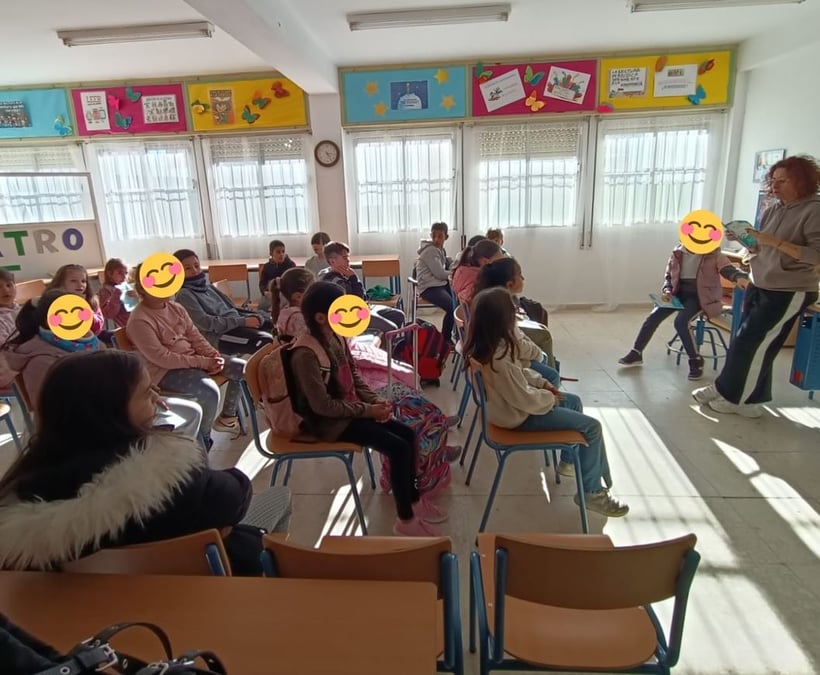
1. Target Audience
The first step in promoting and marketing children's books to schools and educators is to identify the target audience. For example, picture books are suitable for younger children, while chapter books are more appropriate for older children. Children of different ages have varying interests and needs, and it's essential to tailor marketing strategies and materials to effectively reach them.
In addition, teachers, librarians, and parents play critical roles in the book selection process, and it's important to understand their expectations and preferences. For example, educators may prefer books with accompanying educational materials that can be easily integrated into their lesson plans. On the other hand, parents may look for books that promote social and emotional development.
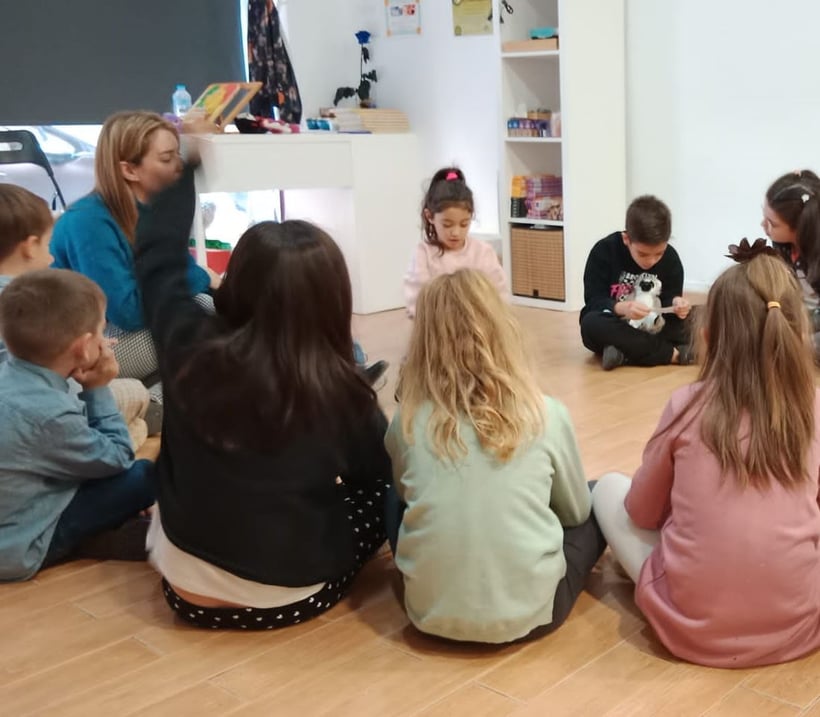
2. Educational Materials
Providing educational materials, such as discussion guides, lesson plans, and reading comprehension questions, can help educators incorporate children's books into their curriculum. This can also increase the chances of the book being adopted by schools and recommended to parents.
With the increasing emphasis on diversity and inclusivity in children's literature, authors should consider developing educational materials that reflect these values. For example, an author who writes a book about a character with a disability can provide resources that promote empathy, understanding, and acceptance of diverse perspectives.
3. Digital Marketing
Digital marketing is an effective way to promote and market children's books to schools and educators. This can include social media campaigns, email newsletters, and targeted online advertising. Creating engaging content that appeals to the target audience can help authors generate buzz and interest in their books.
In addition, authors can consider partnering with online influencers and book bloggers to help promote their books. These partnerships can help authors reach a wider audience and gain credibility in the educational market. For example, an author can collaborate with a teacher influencer on Instagram to create content that promotes their book and provides educational resources.
4. Book Awards and Reviews
Winning book awards and receiving positive reviews can increase the visibility and credibility of children's books. Authors can submit their books for consideration in various book awards, as well as request reviews from book bloggers and educational publications. This can help their books stand out and gain recognition in the educational market.
For example, the Schneider Family Book Awards honor children's books that "embody an artistic expression of the disability experience." Winning this award can help an author gain recognition in the educational market and reach a wider audience of educators and parents.
In today's era, children have higher expectations for the books they read. They want books that are not only entertaining but also educational and meaningful. Authors who can effectively promote their books and demonstrate their value to educators and schools have a greater chance of meeting these expectations and making a positive impact on children's literacy and learning.
Conclusion
Promoting and marketing children's books to schools and educators requires a strategic approach that takes into account the changing educational landscape and evolving expectations of children. By understanding the target audience, networking with educators and schools, providing educational materials, leveraging digital marketing, and seeking book awards and reviews, authors can effectively promote their books and demonstrate their value to educators and schools. Authors who invest in promoting their books to schools and educators can not only increase their book sales but also make a positive impact on children's literacy and learning.
FAQs
-
How can I network with educators and schools to promote my children's books?
You can attend conferences, book fairs, and workshops to connect with teachers and librarians directly. You can also offer to speak at a school or library, host a virtual book club, or provide free educational materials to educators. These activities can help build trust with educators and schools and demonstrate the value of your books.
-
What types of educational materials should I provide to educators?
You can provide discussion guides, lesson plans, and reading comprehension questions to help educators incorporate your book into their curriculum. You can also provide resources that promote diversity and inclusivity, such as materials that promote empathy, understanding, and acceptance of diverse perspectives.
-
How can I leverage digital marketing to promote my children's book?
You can create engaging content that appeals to the target audience, such as social media campaigns, email newsletters, and targeted online advertising. You can also consider partnering with online influencers and book bloggers to help promote your book and reach a wider audience of educators and parents.
x. Hosting author events and school visits to promote your work
As an author of children's books, you may want to consider hosting author events and school visits to promote your work. This can be a great way to connect with young readers and educators and spread the word about your books.
Here are some tips to make your author events and school visits a success:
Here are some tips on how to design book covers that will appeal to young readers and teachers alike.
Plan ahead and be prepared
When planning an author event or school visit, it's important to plan ahead and be prepared. Make sure you know the audience you'll be speaking to, and tailor your presentation accordingly. Consider the age range of the students, their reading level, and their interests.
You should also have a clear plan for your presentation, including a length of time that is appropriate for your audience. Make sure you have all the materials you need, including books, props, and any technology you plan to use. Be sure to also have a backup plan in case something goes wrong.
Engage your audience
To make your author's event or school visit engaging, try to involve your audience as much as possible. Use interactive activities, such as games or quizzes, to keep them interested and entertained. You can also ask questions and encourage them to participate in discussions.
Consider using multimedia elements, such as videos or images, to enhance your presentation. This can help break up the monotony of a long presentation and keep your audience engaged.
Be open to questions
Children are curious and may have a lot of questions for you. Be open to answering any questions they may have, even if they are not directly related to your books. This can help build a connection with your audience and show them that you are approachable and relatable.
Consider the narrative of your presentation
When preparing for an author event or school visit, it's important to consider the narrative of your presentation. Think about the story you want to tell and the message you want to convey. Make sure your presentation has a clear beginning, middle, and end, and that it flows logically from one point to the next.
Adapt to the changing landscape of education
As the landscape of education continues to evolve, it's important to adapt your author events and school visits to meet the changing needs of educators and students. With the rise of online learning and virtual events, you may want to consider offering virtual author events or school visits. This can help you reach a wider audience and connect with readers from all over the world.
FAQs
-
How long should an author event or school visit be?
The length of your author event or school visit will depend on your audience and the type of presentation you plan to give. For younger children, a shorter presentation may be more appropriate, while older students may be able to sit through a longer presentation. Aim for a presentation that is engaging and informative, but not too long that it loses the attention of your audience.
-
Should I bring props or multimedia elements to my author's event or school visit?
Yes, bringing props or multimedia elements can help enhance your presentation and keep your audience engaged. Consider using videos, images, or interactive activities to make your presentation more dynamic.
-
What should I do if I'm asked a question I don't know the answer to?
It's okay if you don't know the answer to every question you're asked. You can either admit that you don't know the answer and offer to research it later, or you can redirect the question to the audience and see if anyone else knows the answer. The important thing is, to be honest, and approachable.
-
How far in advance should I plan for an author event or school visit?
It's recommended to plan at least several months in advance to allow enough time for promotion and logistics. Keep in mind that school schedules can fill up quickly, so it's best to reach out early and secure a date.
-
What should I include in my presentation?
Your presentation should be tailored to your audience, whether it's young children or older students. It should be engaging, interactive, and informative. Consider including visuals such as illustrations or book trailers to enhance the experience. Additionally, think about incorporating personal anecdotes or stories related to your work to make it more memorable.
-
How can I make sure my presentation is inclusive?
It's important to consider diversity and representation in your presentation. Make sure to feature a diverse range of characters in your books and be aware of cultural stereotypes. When interacting with the audience, avoid making assumptions about their background or experiences. Additionally, consider using inclusive language and providing accommodations for any individuals with disabilities.
-
How do I handle difficult questions or criticism during a presentation?
It's important to be prepared for any potential questions or criticisms that may arise during your presentation. Try to anticipate any concerns or challenges that may come up and have a plan for addressing them. If you receive criticism, listen attentively and respond respectfully, even if you disagree. Remember that it's an opportunity for growth and learning.
-
How can I leverage social media to promote my author's events and school visits?
Social media can be a powerful tool for promotion. Make sure to create a buzz leading up to your event by sharing information, behind-the-scenes glimpses, and teasers. During the event, consider live-tweeting or sharing photos and updates on social media. Afterward, continue to share highlights and thank the school or organization for hosting you. Encourage attendees to share their own experiences and tag you in their posts.
xi. The Power of Networking in the Children's Book Industry: Building Community and Fostering Creativity
In the dynamic and vibrant world of children's book publishing, networking with other professionals is an indispensable tool for growth, inspiration, and success. Collaborating and connecting with illustrators, designers, and fellow writers not only expands your network but also offers invaluable opportunities to build a supportive community and forge lasting relationships.

Building Community and Supportive Relationships:
Networking allows you to connect with like-minded individuals who share your passion for creating captivating children's literature. By attending industry events, conferences, and workshops, you can engage with professionals from various backgrounds and experiences. The resulting connections provide a sense of belonging and support, as you exchange ideas, seek advice, and learn from one another's successes and challenges. The collective wisdom of the community helps navigate the ever-changing publishing landscape and provides a strong foundation for personal and professional growth.
Motivation and Inspiration:
Networking with professionals in the children's book industry is an incredible source of motivation. Engaging with fellow authors, illustrators, and designers exposes you to a diverse range of creative perspectives and approaches. By sharing your journeys and exchanging insights, you can draw inspiration from others' experiences, discovering new techniques, fresh ideas, and innovative storytelling methods. The support and encouragement received from peers who understand the intricacies of the industry serve as a constant reminder of the collective drive to create impactful, memorable children's books.
Finding Mentors and Role Models:
Networking offers a unique opportunity to find mentors and role models who can guide and inspire you on your creative journey. Established authors and illustrators can provide valuable advice, offer constructive feedback, and share their industry knowledge. Their guidance can help navigate challenges, refine your craft, and avoid common pitfalls. Mentors can also offer a fresh perspective, pushing you to explore new creative horizons and hone your unique artistic voice. By networking with industry veterans, you gain access to a wealth of expertise that can accelerate your professional growth.
Sparking Unique Creativity:
Networking exposes you to a diverse range of creative styles, perspectives, and ideas. Engaging with professionals from different backgrounds fosters a rich tapestry of inspiration, unlocking fresh possibilities for your own creative endeavors. Through networking, you can connect with illustrators, designers, and writers whose work resonates with your vision, allowing for potential collaborations that amplify your storytelling. The exchange of thoughts and experiences fuels your imagination, driving you to explore new thematic territories and innovate within the children's book industry.
Conclusion:
Networking with fellow professionals in the children's book industry is an indispensable tool for building community, staying motivated, finding mentors, and sparking unique creativity. By engaging with a supportive network of like-minded individuals, you gain access to invaluable guidance, inspiration, and opportunities for collaboration. Embrace networking as a proactive step towards establishing meaningful relationships, expanding your creative horizons, and achieving success in the vibrant world of children's book publishing.
Frequently Asked Questions (FAQ)
-
Why is networking important in the children's book industry?
Networking is crucial in the children's book industry as it allows you to connect with like-minded individuals who share your passion for children's books. It helps build a community of peers who understand the challenges and triumphs of the field, providing support and collaboration opportunities.
-
How can networking benefit my professional growth?
Networking facilitates the development of meaningful relationships with professionals who can become trusted collaborators, mentors, or even lifelong friends. These connections provide a platform for exchanging ideas, seeking advice, and receiving constructive feedback, enhancing both your craft and professional growth.
-
How does networking keep me motivated and accountable?
Interacting with fellow professionals keeps you motivated and accountable by sharing your goals and aspirations with others. This fosters a sense of commitment and dedication, pushing you to strive for excellence. The support and encouragement from your network can help you overcome obstacles and stay focused on your creative journey.
-
Can networking help me find mentors in the industry?
Yes, networking enables you to find mentors—experienced professionals who can guide you based on their expertise. A mentor can offer valuable insights, share industry knowledge, and provide constructive criticism to help you refine your skills. Their guidance can be instrumental in navigating the intricacies of the children's book industry.
-
How does networking spark creativity?
Engaging with diverse professionals, such as illustrators, designers, and writers from different backgrounds, sparks your unique creativity. Collaboration with these professionals exposes you to fresh perspectives, innovative ideas, and inspiration. This exposure broadens your creative horizons and encourages you to explore new artistic directions.
-
In summary, what are the key benefits of networking in the children's book industry?
Networking offers several key benefits, including:
-
Building a community of like-minded professionals.
-
Creating relationships that provide support and collaboration opportunities.
-
Keeping you motivated and accountable to achieve your goals.
-
Finding mentors who offer guidance and industry knowledge.
-
Sparking creativity through exposure to diverse perspectives.
-
xii. The Importance of Consistency and Discipline in Your Writing Career
As a writer juggling a regular job, such as being a teacher, and pursuing a writing career, consistency and discipline play a vital role in your success. Here are some key points highlighting the significance of maintaining a balanced approach and treating your writing endeavors as a business:

-
Finding Balance: Balancing your responsibilities between your regular job and writing can be challenging but essential. Establishing a schedule and allocating dedicated time for writing ensures that you make progress towards your goals while effectively managing your other commitments.
-
Consistency Yields Results: Consistency is the backbone of any successful writing career. Setting aside regular writing sessions, even if they are shorter, helps build momentum and cultivates a habit of creativity. By consistently showing up and dedicating time to your writing, you increase the chances of producing quality work and achieving your long-term aspirations.
-
Treating Writing as a Business: Adopting a professional mindset is crucial for navigating the writing industry. Treating your writing career as a business means setting clear goals, developing a strategic plan, and taking deliberate steps to promote and market your work. This mindset allows you to approach your writing with the necessary dedication and professionalism it deserves.
-
Creating Your Brand as an Educator: As a teacher pursuing a writing career, you have a unique advantage in crafting a brand that sets you apart. Your expertise in education can become a powerful asset, enabling you to create content that resonates with your audience and offers value to both educators and students. Embrace your role as an educator and leverage your knowledge and experience to build a distinct brand that showcases your writing and teaching skills.
-
Keeping up to date with market trends: Keeping up with trends in the children's book industry is another crucial business strategy to ensure your writing remains relevant and resonates with your target audience. The industry is constantly evolving, with new themes, storytelling techniques, and visual styles gaining popularity. By staying informed about the latest trends, you can adapt your writing to meet the changing demands of readers and publishers. Whether it's incorporating diverse representation, exploring emerging genres, or addressing current social issues, staying attuned to trends allows you to connect with readers on a deeper level and increase your chances of success in a competitive market. By embracing trends while maintaining your unique voice and perspective, you can capture the attention and interest of both young readers and industry professionals, fostering continued engagement and growth in your writing career.
-
Finally, finding the right price point for selling your children's book is a crucial aspect of your publishing journey. It requires careful consideration of various factors such as production costs, market demand, and competitive pricing. However, this process can be made easier by trusting in the partnership with EBL. As a company with expertise in all aspects of book publishing, including pricing strategies, EBL can provide valuable guidance and support in determining the optimal price for your children's books. Their industry knowledge and market insights can help you navigate the complexities of pricing, ensuring that your book is competitively priced while maximizing your earning potential. With EBL as your publishing partner, you can have confidence in making informed decisions about pricing, ultimately contributing to the success of your children's book.
Frequently Asked Questions (FAQ)
-
How can I find a balance between my regular job and writing?
Finding balance requires effective time management and prioritization. Create a schedule that includes dedicated writing time and stick to it. Be mindful of your energy levels and find a routine that works best for you. Remember, even small consistent efforts can lead to significant progress.
-
Why is consistency important in a writing career?
Consistency is key because it helps establish a writing routine, builds momentum, and enhances your productivity. Regular writing sessions, even if brief, ensure that you make progress and keep your creative muscles engaged.
-
How can I treat my writing career as a business?
Treating your writing as a business involves setting clear goals, developing a strategic plan, and implementing effective marketing strategies. Treat your writing with professionalism, create a business plan, and allocate time for tasks such as promotion, networking, and building your author platform.
-
How can being an educator enhance my writing career?
Being an educator gives you unique insights and expertise that can set you apart in the writing industry. Leverage your teaching background to create content that resonates with your audience, such as educational materials or books that cater to specific student needs. Your expertise can help you build a brand that appeals to both educators and students.
By embracing consistency, discipline, and treating your writing career as a business, you can effectively balance your time between your regular job and writing aspirations. Create a brand as an educator that showcases your unique skills and knowledge, and watch your writing career thrive.
-
Why is it important to keep up with trends in the children's book industry?
Keeping up with trends is crucial to ensure that your writing remains relevant and resonates with your target audience. The industry is constantly evolving, and by staying informed about the latest trends, you can adapt your writing to meet the changing demands of readers and publishers. This allows you to connect with readers on a deeper level and increases your chances of success in a competitive market.



